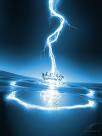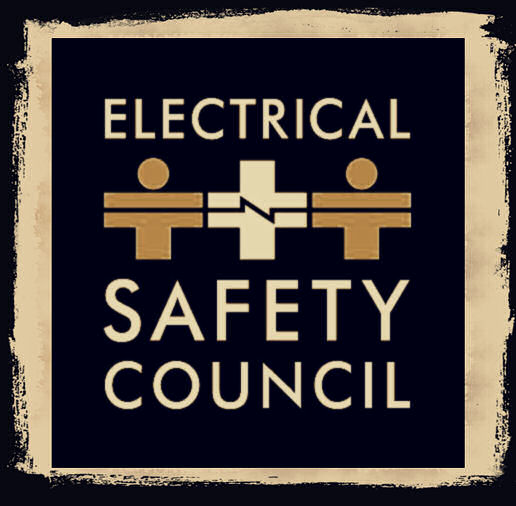


FAQ's
Q: What is an RCD?
A: RCD stands for Residual Current Device. These are what used to be called ELCB’s (Earth Leakage Circuit Breakers). They are usually fitted as standard to most domestic consumer units in houses built after about 1980. Note that they tend to only protect certain parts of the distribution panel wiring (e.g. the kitchen or utility ring main), in a so-called “split-load” consumer unit. They are designed to quickly trip and interrupt the supply to the circuit they are protecting, when an imbalance is detected between the neutral and live in the case of an RCD, or when there is a current in the earth wire of the protected circuit, above a preset limit (usually 30mA), in the true ELCB. You can also purchase “plug-in” ones, ideal for mowers, vacuums, and hair dryers, and an RCD plug (replaces the plug), for things like shower pumps. For an excellent article on how an RCD works, see the TLC ARTICLE. Although the primary protection is the fuse in the plug, these do not blow for some fault conditions, and they are there mainly to protect the wiring and the appliance from overloads. To protect the user from shocks and earth leakage faults, the RCD is ideal for this.
Q: My RCD on the consumer unit trips out, what do I do?
A: If this is a solid fault (i.e. it won’t reset), it is most likely due to a faulty appliance that is plugged in all the time, but has developed a fault that is creating a current to earth, or a current in the live not all going though the neutral part of the protected circuit. Most likely culprits are the washing machine, dishwasher, or dryer. Try unplugging each one in turn, until the RCD holds latched in the ON state. If it is not one of those items, and your Freezer is also on that circuit, try unplugging that too. If that is NOT the problem appliance, do not open the door, get an extension lead, and plug it into another room plug as a temporary measure (on a circuit not affected), until you locate the faulty appliance. Other culprits can be a kettle, or steam iron, (usually anything that comes into contact with water!). However, don’t forget that even small things like radio alarm clocks, and plug-in timers, chargers, and mains adaptors can cause the RCD to trip out, so go around and check ALL your items. If you still cannot find the problem, call in a professional tradesman
Q. Why do my light bulbs burn out so fast?
A. You may be exceeding the maximum lamp wattage of the fixture. (There should be a label inside the fixture). Do not exceed 60 watts for most ceiling fixtures. Another reason may be vibration. Vibration is the culprit in short bulb life. There are vibration resistant bulbs for ceiling fans and garage door opener and there are rough service bulbs for portable lights.
Q. Can I replace a standard wall switch with a dimmer?
A. A dimmer easily replaces a standard wall switch and uses the exact same wiring. Some light bulbs may not be suitable for dimming.
Q. Can a dimmer control a ceiling fan?
A. A dimmer cannot control a ceiling fan, it will damage the fan’s motor. Only use a fan speed control to control a ceiling fan. Fan speed controls have special circuitry that will not damage the motor. For ceiling fans with a build in light fixture, combination dimmer/fan speed control is available.
Q. When I go to turn my dimmer off, it is very hot. Is this a fire hazard?
A. Dimmers are rated for how many watts they are designed to handle. If a dimmer has to operate at or close to its full capacity, it will heat up. Some dimmers have metal fins on the front of them to enable proper heat dissipation. You can either reduce the wattage connected to the dimmer to alleviate the problem, or put in a larger-rated dimmer.
Q. My lights dim or flicker when the microwave or other appliance is used?
A. This normally only happens in older homes. The reason is basically two fold. Older homes were not wired for the electrical usage of today’s homes and with all the modern day appliances most branch circuits in older homes are just overwhelmed, creating a draw that in turn momentarily dims the lights. Today’s homes have several more branch circuits to spread out the load on any given circuit and the main panels handle double the amperage. The other reason is generally associated with the neutral. A possible solution would be to upgrade your panel but is the cost worth the occasional dimming of your lights? Probably not.
Q. Do dimmers save energy?
A. Dimming a bulb by 25% uses approximately 20% less energy, and it will help extend bulb life by up to 4 times as well.
Q. How can I reduce my energy bill?
A. There are a few things you may do to lower your electrical energy consumption.
1. Unplug seldom used appliances, like an extra refrigerator in the basement or garage that contains just a few items. You may save around 10 pounds every month on your utility bill. Unplug your chargers when you're not charging. Keep them unplugged until you need them.
2. Enable the "sleep mode" feature on your computer, allowing it to use less power during periods of inactivity. Configure your computer to "hibernate" automatically after 30 minutes or so of inactivity. The "hibernate mode" turns the computer off in a way that doesn't require you to reload everything when you switch it back.
3. Set your thermostat in winter to 68 degrees or less during the daytime, and 55 degrees before going to sleep (or when you're away for the day). During the summer, set thermostats to 78 degrees or more. Ceiling fans can make a room feel much cooler without using nearly as much electricity. This allows you to keep your thermostat a little higher in the summer. During the winter, you can reverse your ceiling fan, which will push the warm air back down.
4. Set your refrigerator temperature at 38 to 42 degrees Fahrenheit; your freezer should be set between 0 and 5 degrees Fahrenheit. Use the power-save switch if your fridge has one, and make sure the door seals tightly. Don't preheat or "peek" inside the oven more than necessary. Check the seal on the oven door, and use a microwave oven for cooking or reheating small items. Wash only full loads in your dishwasher.
5. Don't forget to flick the switch when you leave a room. Use motion sensor lights inside and outside of your home. Use compact fluorescent energy saving light bulb where possible.




